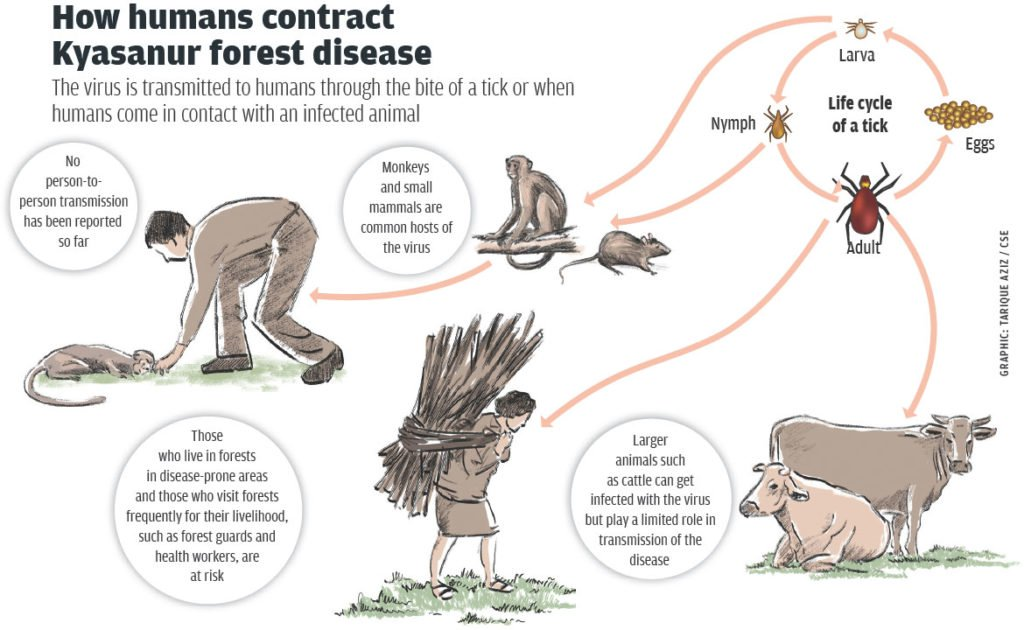Table of contents
Kyasanur Forest Disease (KFD) is a viral infection, also known as monkey fever, the death of a monkey can signal an outbreak of the disease.
KFD was first identified in the Kyasanur Forest area of Sorab Taluk in Shivamogga district in Karnataka, India, in 1956, and it is named after this region.
Context
Since January 1 this year, two people have died due to Kyasanur Forest Disease (KFD), a viral infection, in Karnataka.
- The number of deaths reported due to the disease since 1956 is above 560 - it was noticed in the forests of Shivamogga district.
- The number of cases in Malnad’s districts — Shivamogga, Uttara Kannada and Chikkamagaluru — has been increasing, forcing the Health and Family Welfare Department to take measures to contain its spread.
- Since January 1, the Department of Health and Family Welfare has conducted 2,567 tests and 68 people have been found positive.
History of spread in India
For nearly 15 years (up to 1971), the disease was confined to Shivamogga district, Karnataka. It was noticed in Uttara Kannada district in 1972.



Kyasanur Forest Disease (KFD) - Spread
- In 1980, cases were reported in Koppa, Chikkamagaluru.
- Two years later it was found in Dakshina Kannada.
- Cases were late reported in Chamarajanagar (2012), Belagavi district (2016), Gadag (2017), Mysuru, and Hassan (2019).
The virus has been found in other states too.
- It was detected in dead monkeys in the Nilgiri district of Tamil Nadu in 2012.
- Six human cases were reported in Wayanad and Malappuram, Kerala in 2013–14.
- An outbreak was reported in North Goa district in 2015–16. Maharashtra reported cases in 2016.
We can't clear UPSC for you.
But with our personalised mentor support, you'll be ready to do it yourself.
How does it spread?
The disease spreads through tick bites, particularly from infected ticks.

- Primates that come into contact with these ticks can contract the disease.
- Humans can also contract the disease if they visit the same forest areas and are bitten by infected ticks.
Symptoms of KFD
The symptoms start to appear three to eight days after the bite of an infected tick and can include:
- High fever
- Severe headache
- Redness of the eyes
- Severe fatigue and body pain
- Vomiting
Symptoms may progress to severe gastro-intestinal symptoms, and in some cases, bleeding from the nose or gastrointestinal tract.
Treatment
- There is no specific treatment, doctors handle the symptoms and monitor the vitals daily.
- There was an attempt to use a vaccine, but it was shown to be ineffective.
- The Indian Council of Medical Research (ICMR) is in consultation with Indian Immunologicals for the development of a vaccine or treatment for the disease.
How is India dealing with it?
The Health and Family Welfare Department is taking measures to contain the spread of KFD.
- They have conducted thousands of tests to identify if someone has KFD.
- The forest department is distributing DEPA oil, a tick repellent, to families who have to go into the forest.
- The State Government has also decided to provide free treatment to patients.
Additionally, surveillance and awareness programs are likely to be part of the response to prevent and control the spread of KFD.
Previous Post